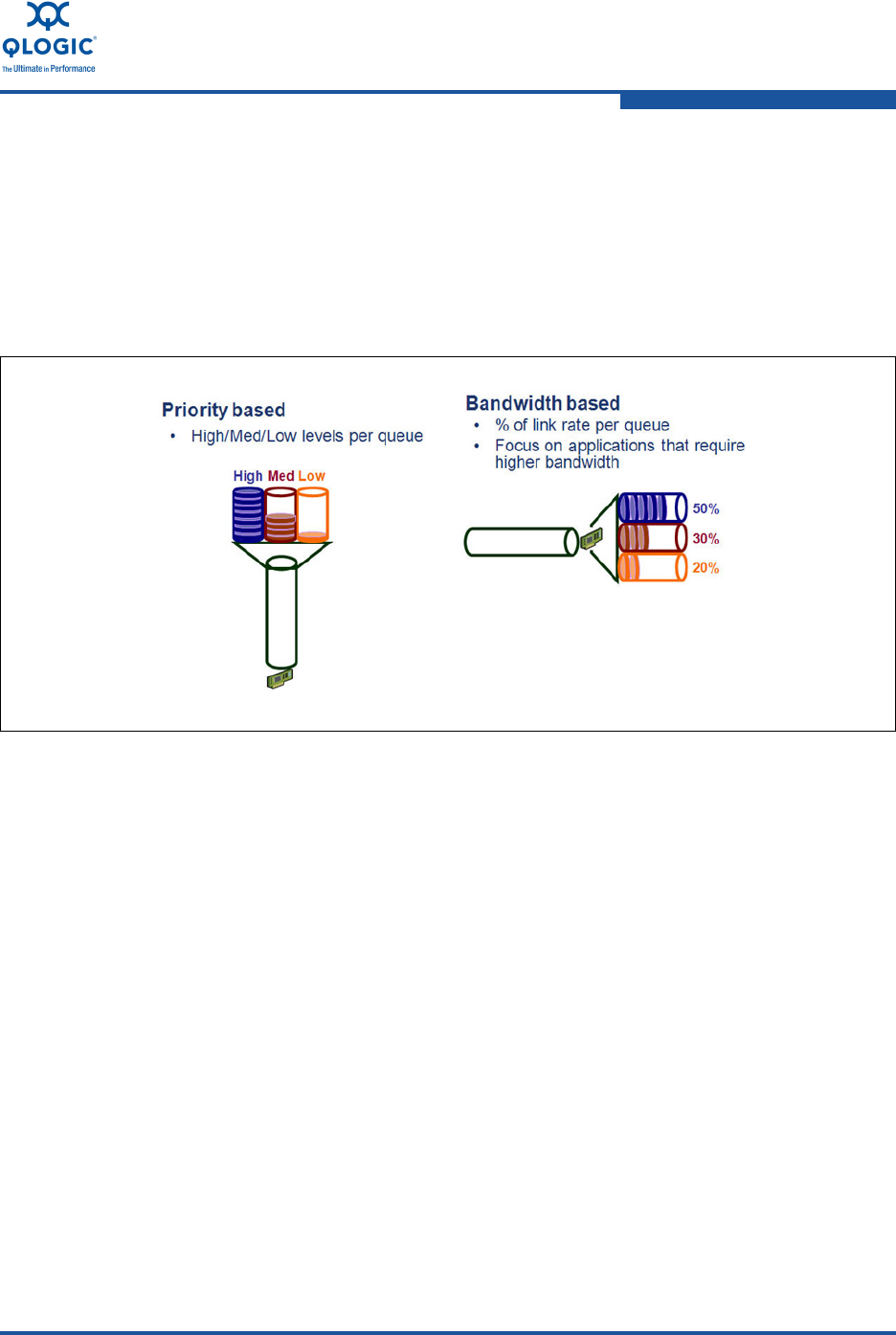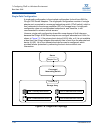
7–Configuring FCoE in a Windows Environment
N_Port ID Virtualization
FE0254601-00 A 7-13
Implementing Adapter-Based Quality of Service
The QLogic 8100 Series Adapter solution provides for standards-based quality of
service (QoS), ensuring high-quality performance for applications that require
preferential delivery. The QLogic QoS solution is based on assigning QoS levels
to virtual ports (NPIV ports). You can configure QoS using the priority method or
the bandwidth method, as shown in Figure 7-5. On a single physical port, you can
configure QoS using the priority method or the bandwidth method but not both.
Figure 7-5. Priority and Bandwidth-Based QoS
The priority method assigns priority levels (low, medium, high) to virtual ports
based on the quality of service required for the applications or VMs using the
virtual port. This method provides for various levels of latency requirements
across virtual ports.
The bandwidth method assigns a bandwidth percentage (0–100) or a bandwidth
rate (0–10Gb) to applications or VMs that are using a virtual port. This method
provides a minimum bandwidth guarantee. Bandwidth-based QoS configuration
applies only when the total bandwidth requirement of the applications exceeds the
available bandwidth. Bandwidth is not reserved for a particular virtual port, and
unused bandwidth is shared among the other virtual ports.
The physical port or WWN always has high priority, independent of the bandwidth
or priority scheme chosen for created virtual ports. You need not assign a QoS
level to every virtual port that you create. If a QoS level is not assigned to a virtual
port, the default is low priority (best effort), independent of the bandwidth or
priority scheme. This flexibility allows you to focus on critical applications to
ensure that the highest service level is provided. You can modify QoS levels for
virtual ports using the QConvergeConsole CLI.


















